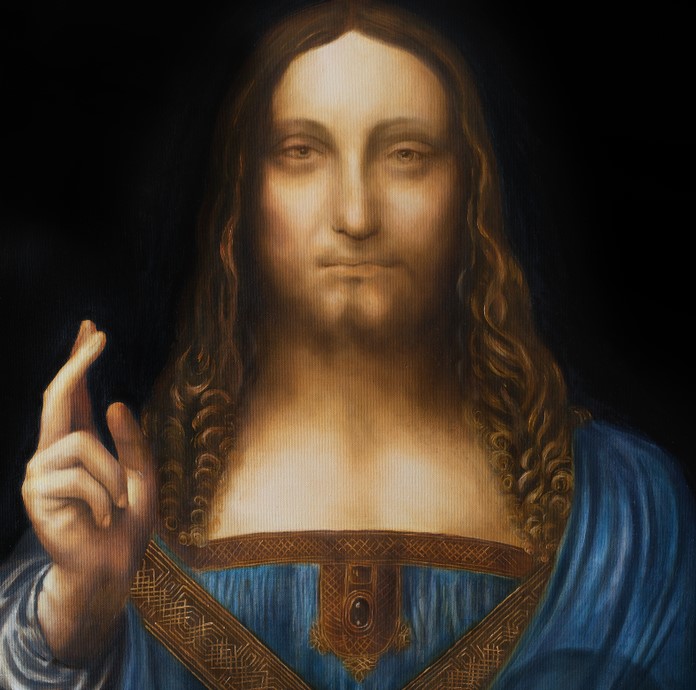When it comes to painting or painters, The Da Vinci is the first name our mind pops up with. His many famous paintings include “Mona Lisa” and “The Last Supper”. One of them is also called Salvator Mundi. Here in this article, we will unveil the mystery of why the exhibition for this long lost painting was canceled. We heard cries of the painting being a fake one, but is there anything more controversial that is surrounding the world’s most expensive painting?
The journey of the painting
Salvator Mundi is a painting by the artist Leonardo Da Vinci during the Italian Renaissance that is dated to c. 1500. There has been long thought that the painting was lost because of its restoration. The restoration was so over-done that everybody thought it was a copy, and the original is lost somewhere. It was not until 2011-12 when the rediscovered and restored works of Leonardo were displayed in the National Gallery, London. After six years, this painting was sold in an auction to Christie’s at a very high price.
In the year 2017, the painting was again sold at an auction at $450.3 million to Louvre Abu Dhabi, which became a new record for the most expensive painting ever sold.
Why was the exhibition canceled
The exhibition was planned for this painting, but it was canceled all of a sudden. The reason behind the cancellation has been unknown, but it was speculated, it is because of the painting. It was suddenly and mysteriously postponed, and an official statement came out stating, “Further details will be announced soon.”
Many people criticized the reason of why the painting was sold and bought at such an excruciating price. It was also said that if Louvre Abu Dhabi has doubts about Salvator Mundi, then they would most likely also be aware of its condition. Despite all this, they bought the painting.
Former director of New York’s Metropolitan Museum, Thomas Campbell, wrote: “450 million dollars? Hope the buyer understands the issues relating to conservation.” The pictures accompanying Salvator Mundi for restoration were also taken. After this, all the previous repaints were tried to be cleaned off to reveal the real image, which was full of streaky gaps, including a sizeable few running from bottom to top. The implication was that the painting that was sold by Christie’s is over-restored.
A glimpse of the original
The photograph was, in fact, something of a bombshell. When the over-restoration was removed, it was seen that the time had left Christ with impaired eyes and partly bald, yet the face still looked beautiful. One could see the harmonious and smooth face with anatomically precise. The painting has a completely different feeling and tone, from the ambiguous and smoky appearance of the painting we see today. If the scars of the age are visible, so is the youthful beauty of Christ. He looks like just the kind of long-haired, androgynous model Leonardo loved to portray. The painting itself was as powerful as it was without any further treatment, and it was later considered to be left the way it was. There is one more element that was revealed after wiping off the restoration. It was seen that Christ had two right thumbs, which art historians call a ‘pentimento’. This term certainly means that the artist had a second thought while painting, making everyone believe that Salvator Mundi, which they have is the original one and not the copied version. So, this piece of crucial evidence was enough to identify that the painting is itself the one painted by Leonardo and suggests that its restoration has been so excessive that its power has been muffled up.
Summing up
It was perhaps an institutional embarrassment about the decision to work with a group of art dealers to authenticate a painting of Leonardo, which also explains the lack of experts at the National Gallery. The painting itself is a masterpiece of Leonardo himself and also a part of history.







